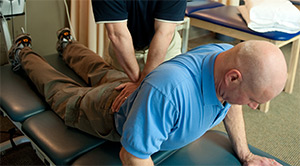
Learn about nonsurgical options to get you back to your everyday activities.
Return to Activity | Diagnostics | Pain Relief | Time | Limiting Rest | Physical Therapy | Exercise | Types of Medication
The primary goal of treatment is to get you back to your everyday activities. During your initial visit, the physician will assess your medical history and collect more specific information during the exam. In order to better understand your back or neck problem, the physician may gently move your joints and limbs. It is important to answer all the physician’s questions honestly, because your answers help determine a correct diagnosis.
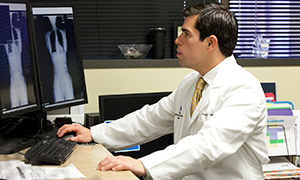
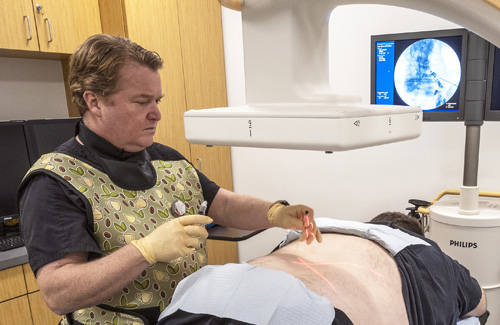
Doctors who focus mainly on pain symptoms often recommend the exact opposite course of action that is optimal for recovery from a back problem. For example, years ago, doctors treated back pain with bed rest and heavy drugs in order to mask the patient’s discomfort. Patients became sedentary and increasingly dependent on drugs. It was later discovered that this treatment was actually damaging to the back, because it weakened muscles and caused more pain.
Pain is a signal from the body to the brain that something is wrong.
Either a certain motion placed too much strain on the back, or the back
is too weak or inflexible. Your specialist will help determine the origin
of your pain and the best treatment for it. More about pain relief.
[Top]
Time is your most valuable asset. In cases where pain is focused in the low back
or when there are NO RED FLAG
SYMPTOMS,take the time to help yourself. Check out the home
therapy section of this site for ways to treat your neck and back pain yourself.
[Top]
In 1986, the New England Journal of Medicine released that the treatment of most back pain cases should involve no more than two days of rest and inactivity. After that, patients should start moving and exercising to strengthen back muscles and increase flexibility. The rehabilitative process requires a commitment on the part of the patient to work closely with a therapist during the first few weeks to ensure a successful long-term recovery.
While drugs and manipulation may relieve initial pain, neither of these
alters the musculature of the back, which is essential for long-term
recovery. Only exercise can strengthen the back muscles and make them
more flexible and resistant to future strain.
[Top]
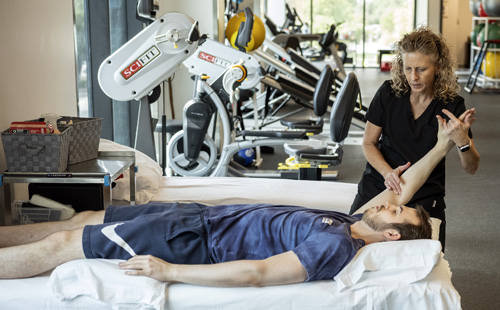
Physical therapy increases flexibility and strengthens muscles that support the
spine. Greater strength and flexibility will help prevent future back strain.
A therapist may use ultrasound, electrical stimulation, heat or ice, mobilization
and exercises to reduce pain and the likelihood of future injury. Click here
to learn more about physical therapy.
[Top]
Years ago, the prescription for pain was bed rest. However, we know today
that more than a few days of bed rest after an injury can be counterproductive
to rehabilitation.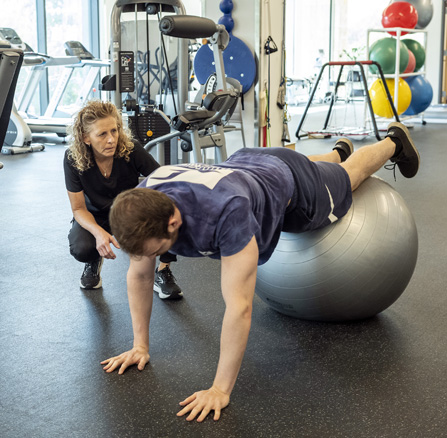
Exercise and movement actually help tissues in the back become stronger, more supportive of the back and resistant to additional injury. Specific exercises can be used to target particular types of back pain. Engaging in activity acts as a lubricant to the back muscles and joints, and it’s as necessary to recovery as oil is to the hinge in a squeaky door.
It is important to work with a
therapist to make sure exercises are done properly. Never do any exercise
that causes pain to your back. Click
here to learn about specific back pain exercises.
[Top]
For years, spine physicians have used cortisone injections, epidural steroid injections, trigger point injections and nerve blocks to relieve pain in the spine. They are often provided in a series of three or four injections spanned over a couple weeks.
These injections are intended as a means to an end. The goal is to provide enough pain relief to bridge the patient from being inactive to being able to attend physical therapy, where they can better treat their back problems with special exercises.
There has been conflicting research
about the value of injection therapy. Some studies have questioned
the benefit of epidural steroid injections. In 1997, Britain's
Royal College of General Practitioners noted in its back care guidelines
that epidural steroid injections relieve low back pain with sciatica
(leg pain) better than some other treatments. The Royal College
is less supportive of facet joint injections and trigger point
injections. It sees little evidence that these injections improve
clinical outcomes. With that said, many spine specialty centers
believe in the benefit of injections and continue to use them. 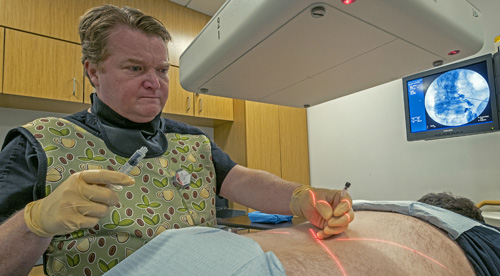
To come to a definitive conclusion regarding its proven benefit,
injection therapy needs to undergo further testing. Some experts
theorize that there may be some placebo effect associated with
the relief that accompanies an injection. In any case, when a
patient gains relief from an injection, it reinforces a physician's
desire to use that treatment again.
[Top]
Medications can lessen swelling and reduce pain in the back and neck. The type of medication your physician recommends depends on your symptoms and your level of pain.
At home, pain can be relieved with Non-Steroidal Anti-Inflammatory Drugs
(NSAID), such as ibuprofen products like Motrin or Advil. Aspirin may
also be recommended to ease pain.
[Top]